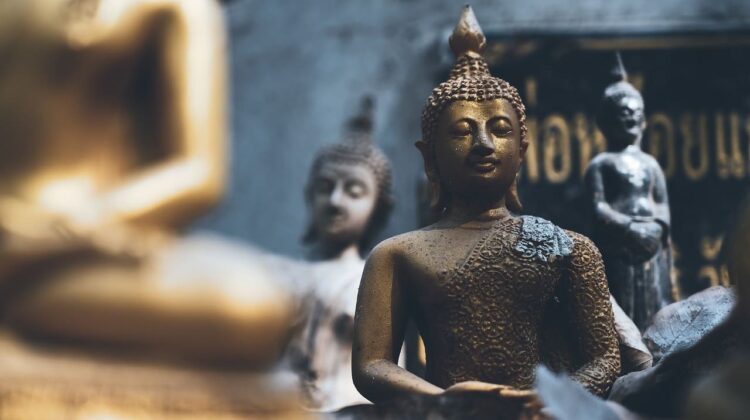
Spirituality and Religion: The Varied Beliefs Across Asia
In the vast tapestry of human belief systems, few regions of the world offer as rich and diverse a panorama as Asia. From the snowy peaks of the Himalayas to the tropical forests of Southeast Asia, the continent is a melting pot of spiritual traditions and religious practices, each with its own unique history, philosophy, and cultural significance. This article delves into the intricate web of beliefs that characterize the spiritual landscape of Asia, exploring how ancient traditions and modern interpretations coexist and evolve in a region that has long been a crucible of human thought and spirituality.
At the heart of Asia’s spiritual diversity lies India, often regarded as the birthplace of major world religions such as Hinduism, Buddhism, Jainism, and Sikhism. Hinduism, the oldest of these, is a complex and multifaceted faith that encompasses a wide range of practices and beliefs. It is characterized by its pantheon of deities, the concept of karma and reincarnation, and a rich tapestry of rituals and festivals. The Bhagavad Gita, the Upanishads, and the Vedas are some of its most revered texts, offering profound insights into the nature of existence and the path to spiritual enlightenment.
Buddhism, which emerged from the teachings of Siddhartha Gautama, the Buddha, in the 6th century BCE, has also had a profound impact on Asian spirituality. While it shares some philosophical underpinnings with Hinduism, Buddhism places a greater emphasis on the individual’s path to enlightenment through the Four Noble Truths and the Eightfold Path. The religion has evolved into various branches, including Theravada, Mahayana, and Vajrayana, each with its own interpretations and practices. Notably, Buddhism has spread beyond India, influencing countries like Thailand, Myanmar, Japan, and China, where it has integrated with local traditions to create unique cultural expressions.
Jainism, another ancient Indian religion, emphasizes non-violence (ahimsa), truth, and asceticism. Its followers adhere to strict ethical codes and often practice vegetarianism as a way to minimize harm to living beings.
Sikhism, founded in the 15th century in the Punjab region, is a monotheistic faith that stresses the importance of devotion to one God, equality of all humans, and community service. The Guru Granth Sahib, the central religious scripture of Sikhism, is a compilation of hymns and writings by Sikh Gurus and other saints.
Moving eastward, China presents a fascinating blend of spiritual traditions, including Confucianism, Taoism, and Buddhism. Confucianism, founded by Confucius in the 5th century BCE, is not a religion in the traditional sense but rather a system of ethical and philosophical teachings that have shaped Chinese culture and society for centuries. It emphasizes values such as filial piety, social harmony, and the importance of education.
Taoism, attributed to the sage Laozi, advocates for living in harmony with the Tao, or the fundamental nature of the universe. It emphasizes simplicity, spontaneity, and non-interference with the natural order of things. The Tao Te Ching and the Zhuangzi are key texts in Taoist thought, offering poetic and philosophical guidance on how to live a balanced life.
Shinto, Japan’s indigenous spirituality, is deeply rooted in the worship of kami, or spirits associated with natural elements, ancestors, and historical figures. Shinto rituals and festivals are an integral part of Japanese culture, often taking place at shrines that dot the country’s landscape. Shinto coexists harmoniously with Buddhism, which was introduced to Japan in the 6th century and has since developed into distinct schools such as Zen and Pure Land Buddhism.
Southeast Asia, with its rich cultural mosaic, is home to a variety of religious traditions. In countries like Thailand, Cambodia, and Laos, Theravada Buddhism is the predominant faith, influencing daily life, art, and politics. The region’s Buddhist temples, or wats, are architectural marvels that reflect the deep spiritual heritage of the people.
Indonesia, the world’s largest Muslim-majority country, presents a unique case of religious syncretism. While Islam is the dominant religion, the country also has significant Hindu and Buddhist communities, particularly in Bali and parts of Java. The ancient temples of Borobudur and Prambanan stand as testaments to the region’s historical religious diversity.
In addition to these major religions, Asia is also home to a myriad of indigenous and folk beliefs that have persisted for centuries. These animistic and shamanistic traditions often involve the worship of nature spirits, ancestor veneration, and rituals to ensure harmony between the human and spiritual worlds. In Mongolia, for instance, shamanism remains a vital part of the cultural fabric, with shamans acting as mediators between the physical and spiritual realms.
The interplay between religion and modernity is a compelling aspect of Asia’s spiritual landscape. In countries like South Korea and Singapore, rapid economic development and urbanization have led to a decline in traditional religious practices among the younger generation. However, there has also been a resurgence of interest in spirituality as people seek meaning and connection in an increasingly fast-paced and materialistic world. This has given rise to new religious movements and the adaptation of traditional practices to contemporary contexts.
The impact of globalization cannot be overlooked when examining the evolution of spirituality in Asia. The spread of information and the ease of travel have facilitated cross-cultural exchanges and the blending of religious practices. For example, the popularity of yoga and meditation, rooted in Hindu and Buddhist traditions, has transcended geographical boundaries and gained global recognition. Similarly, the influence of Western New Age spirituality can be seen in urban centers across Asia, where concepts such as mindfulness and holistic wellness have found a receptive audience.
Despite the rich diversity of beliefs, there are common threads that run through the spiritual tapestry of Asia. One such thread is the emphasis on harmony, whether it is harmony with nature, society, or the inner self. This principle is evident in practices such as feng shui in China, which seeks to create balance in one’s environment, and the Japanese concept of wa, which emphasizes social harmony and group cohesion.
Another common theme is the pursuit of enlightenment or self-realization, a goal that is central to many Asian spiritual traditions. Whether it is the Buddhist quest for Nirvana, the Hindu pursuit of Moksha, or the Taoist aspiration for union with the Tao, the journey towards spiritual awakening is a shared aspiration that transcends religious boundaries.
The role of rituals and festivals in Asian spirituality cannot be overstated. These communal practices serve as expressions of faith, vehicles for transmitting cultural values, and opportunities for social bonding. Festivals such as Diwali in India, Vesak in Southeast Asia, and the Lunar New Year in China are not only religious observances but also cultural celebrations that bring communities together and reinforce a sense of identity and continuity.
In conclusion, the spiritual landscape of Asia is a testament to the region’s profound and enduring quest for meaning and transcendence. It is a mosaic of ancient traditions and contemporary interpretations, of local customs and global influences. As Asia continues to evolve in the face of modern challenges and opportunities, its rich spiritual heritage remains a vital source of wisdom, resilience, and inspiration. Whether through the meditative silence of a Zen garden, the vibrant colors of a Hindu festival, or the serene beauty of a Shinto shrine, the diverse beliefs of Asia offer a glimpse into the boundless depths of the human spirit.
Author: Donglu Shih
Expert in Asian culture and economics. She collaborates with major companies in the field of international relations. Collaborates with The Deeping on Asian political topics

